День 4
С утра мы отправились в Сантандер, центр автономии Кантабрия.
Это большой портовый город, вытянувшийся вдоль побережья Атлантического океана с многочисленными парками и пляжами, отсюда отходят пассажирские паромы в Великобританию.
Из достопримечательностей посетили Королевский дворец Ла-Магдалена (внутрь не пускают) и парк вокруг.
 Королевский дворец
Королевский дворец
 Пляжи Сантандера
Пляжи Сантандера
В старом городе выделю Кафедральный собор Успенья Богородицы (12-14 века)

 Собор внутри
Собор внутри
 На улицах Сантандера
На улицах Сантандера
 На улицах Сантандера
На улицах Сантандера
Дальше нас привезли в городок Сантильяна-дель-Мар, испанцы шутят что это город " трех неправд" (по названию): там нет святых, моря и он не на равнине). Однако это обязательное место посещения паломников, тут на мостовых и стенах часто встречается знак Иакова - ракушка. сам городишко маленький, практически сохранивший древневековый облик. Там я купил сувенир на память - испанского черного бычка (во время правления Франко металические силуэты быков поставили на холмах по всей Испании, но каталонцы ненавидят все испанское и у них считается особым шиком подобраться как-то к быку и отпилить у него причиндалы).
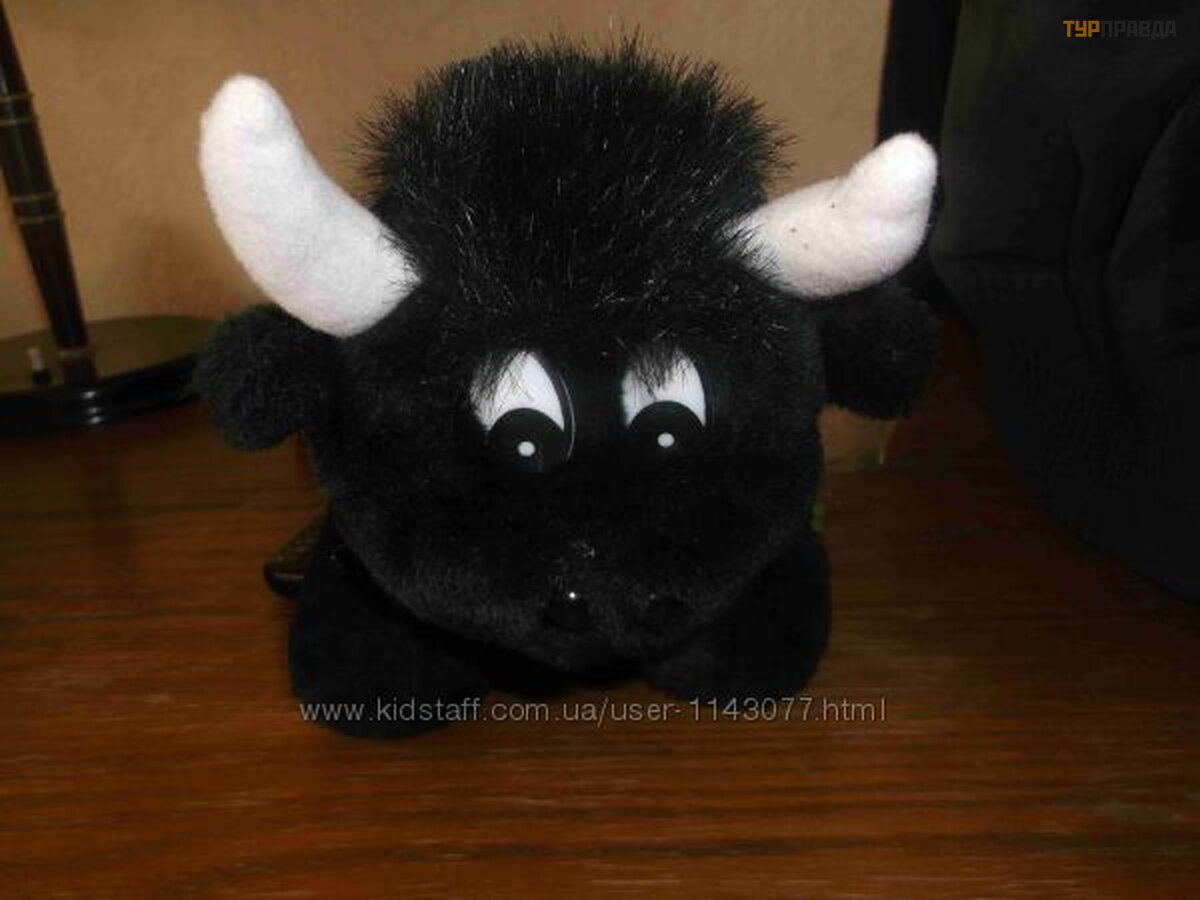
Потом нас повезли к пещере Альтамира. Там нашли наскальные изображения людей и животных, которым 14 веков. Сами пещеры закрыты, испанцы построили точную копию пещеры и водят туда экскурсии. Я считаю это форменым надувательством - брать деньги за копии. Поэтому никаких фото принципиально делать не стал. Вся группа была разочарована.
Закончивался наш маршрут этого дня в Комильясе, небольшом прибрежном городке. Однако, тут немало примечательных зданий, главное из которых " Эль Капричио" великого Гауди.
Вход платный, но это того стоит, не так много зданий Гауди построил.


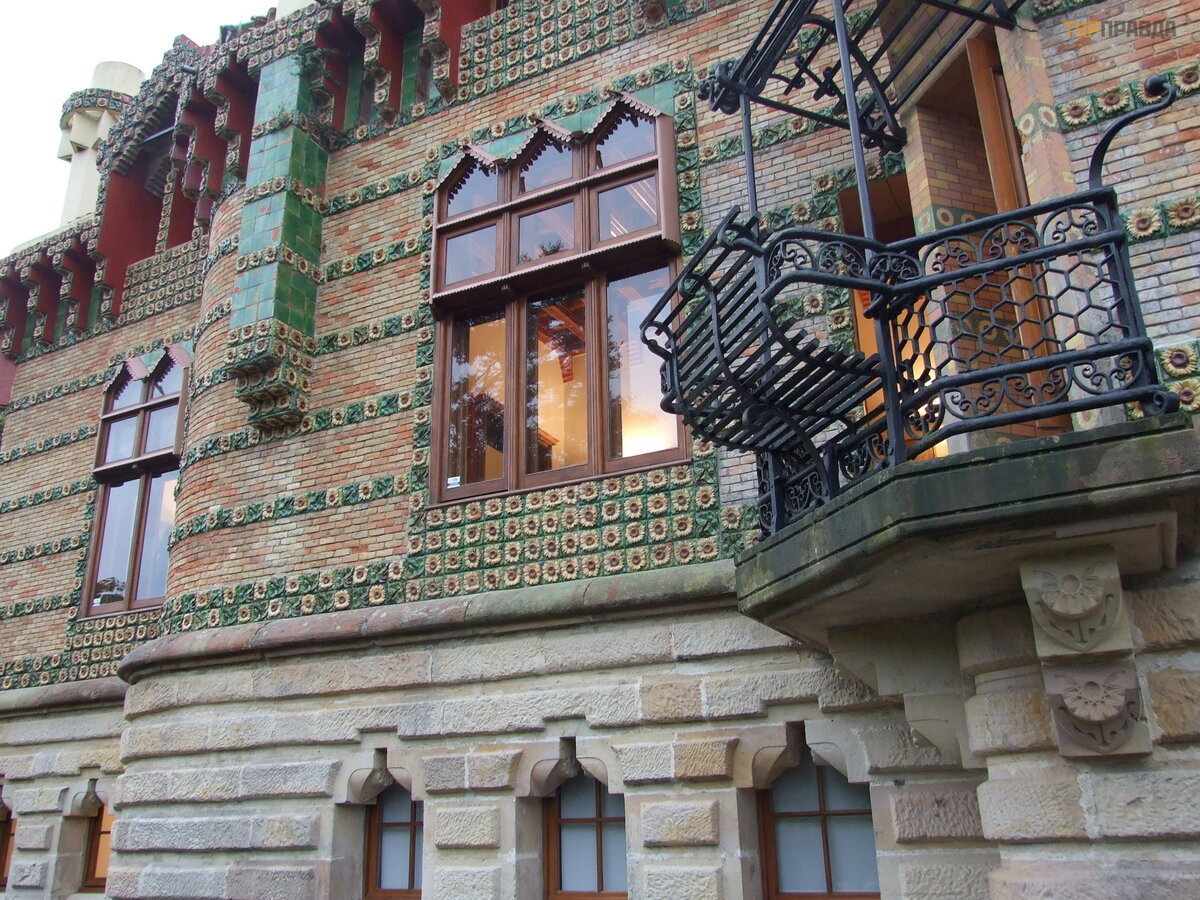 Оригинальный балкончик
Оригинальный балкончик
 Подсолнухи - основная тема декора
Подсолнухи - основная тема декора
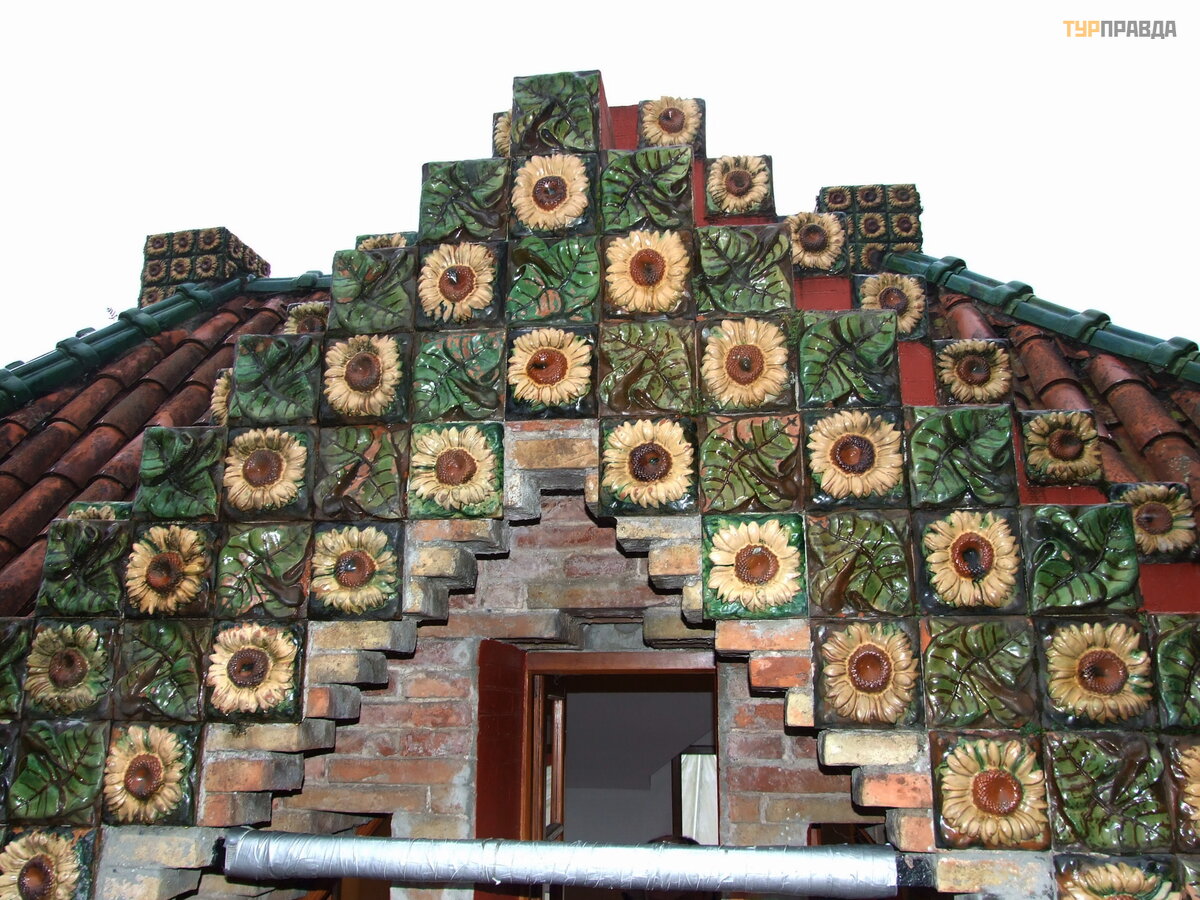
 Ограда
Ограда
 В саду
В саду
 Вид из сада
Вид из сада
 А вот и великий Гауди сидит на скамеечке и смотрит на свой шедевр
А вот и великий Гауди сидит на скамеечке и смотрит на свой шедевр
В городке расположен большой папский университет. До него мы не дошли, по причине нехватки времени
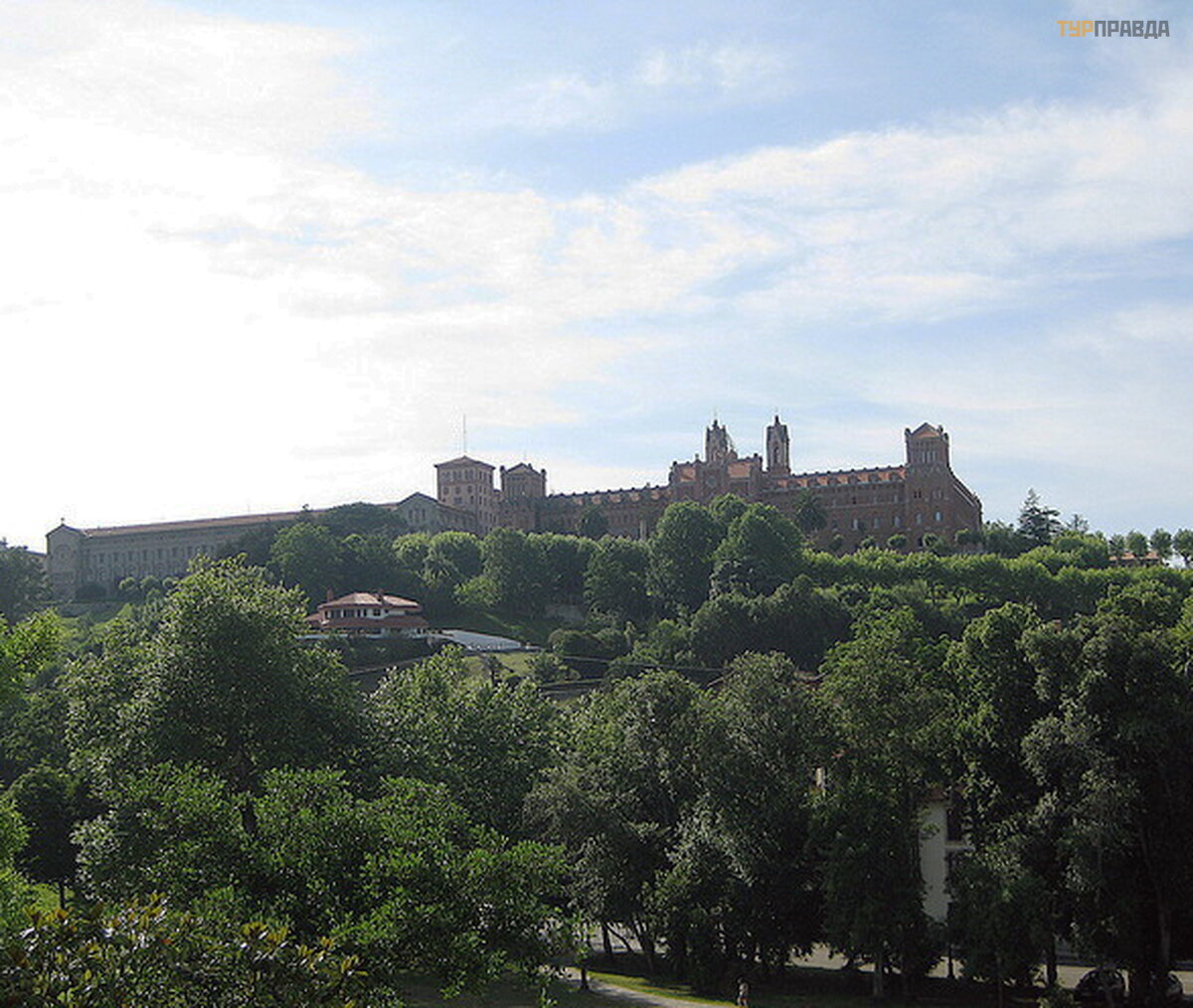
Вот на хорошей ноте закончился очередной день путешествия.
День 5
Ночевали мы две ночи в Хихоне (по местному Джижон), довольно большой Астурийский город и порт. Но осмотреть его не получалось, т. к. уезжали рано, а возвращались уже затемно.
Вот некоторые утренние фото, что успел сделать до отъезда автобуса
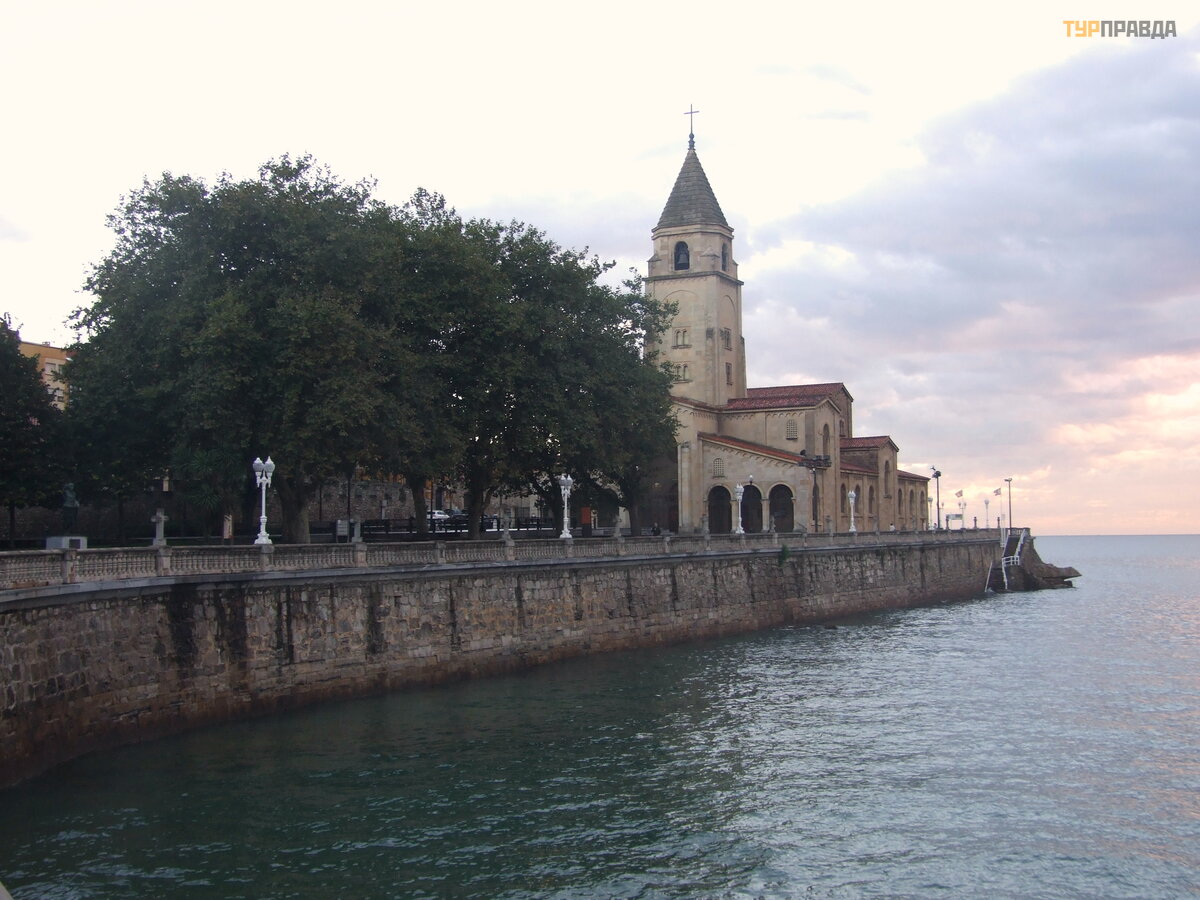

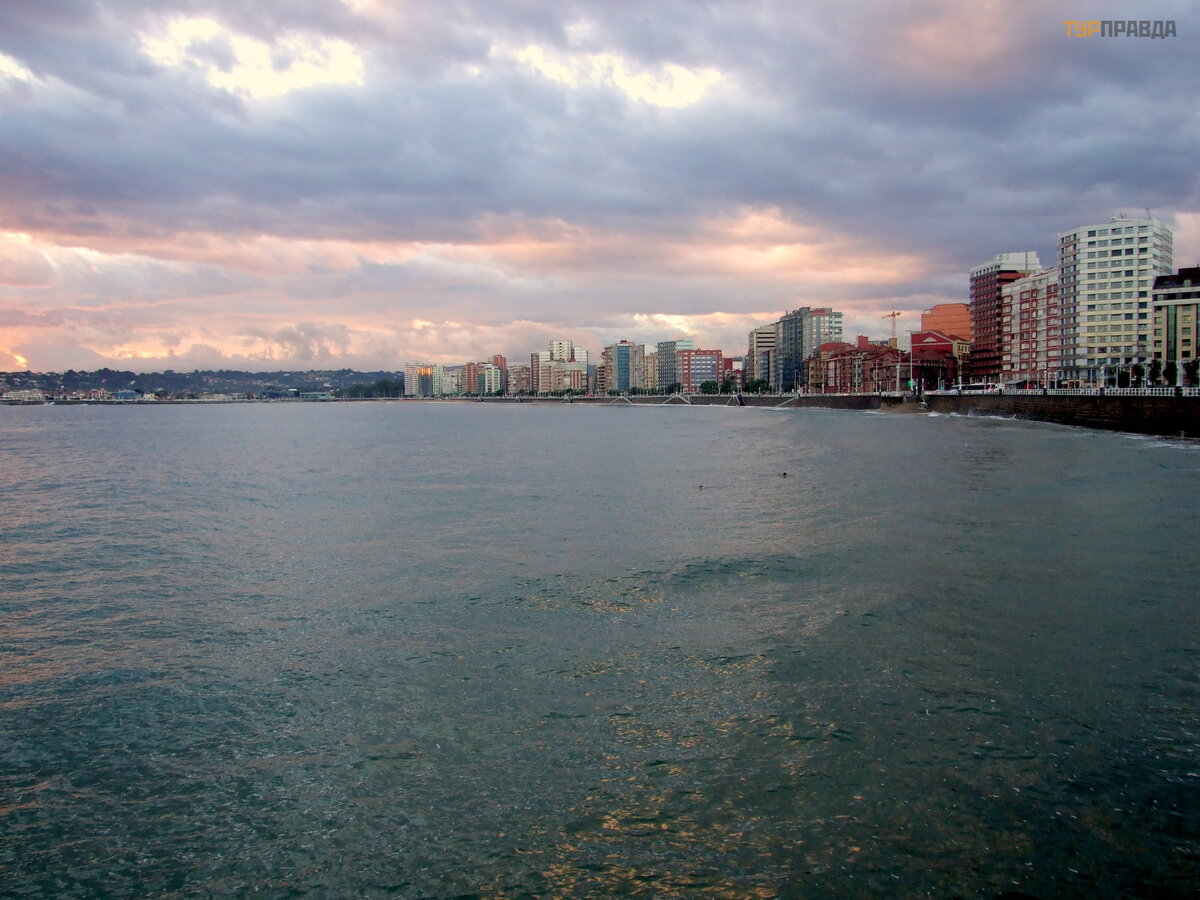
В этот день погода стояла солнечная и первым городом путешествия стал древний город Овьедо, столица Астурии.
Сначала, местный гид повел нас на гору, где находится церковь памятник ЮНЕСКО -Св. Марии Наранко (до этого здание было дворцом короля Астурии) 9 века.

Вход во внутрь платный - 2 евро, но смотреть там абсолютно нечего, все пусто

С горы открывается замечательный вид на Овьедо. Белым крылом выделяется очередной шедевр Калатравы - Дворец Конгрессов, хотя в проектировании он допустил ошибки и строительная компания перестраивала некоторые элементы и подала на архитектора иск в суд за превышении сметы. Суд присудил архитектору выплатить стройкомпании аж 3 млн. евро.

Вот и сам Дворец
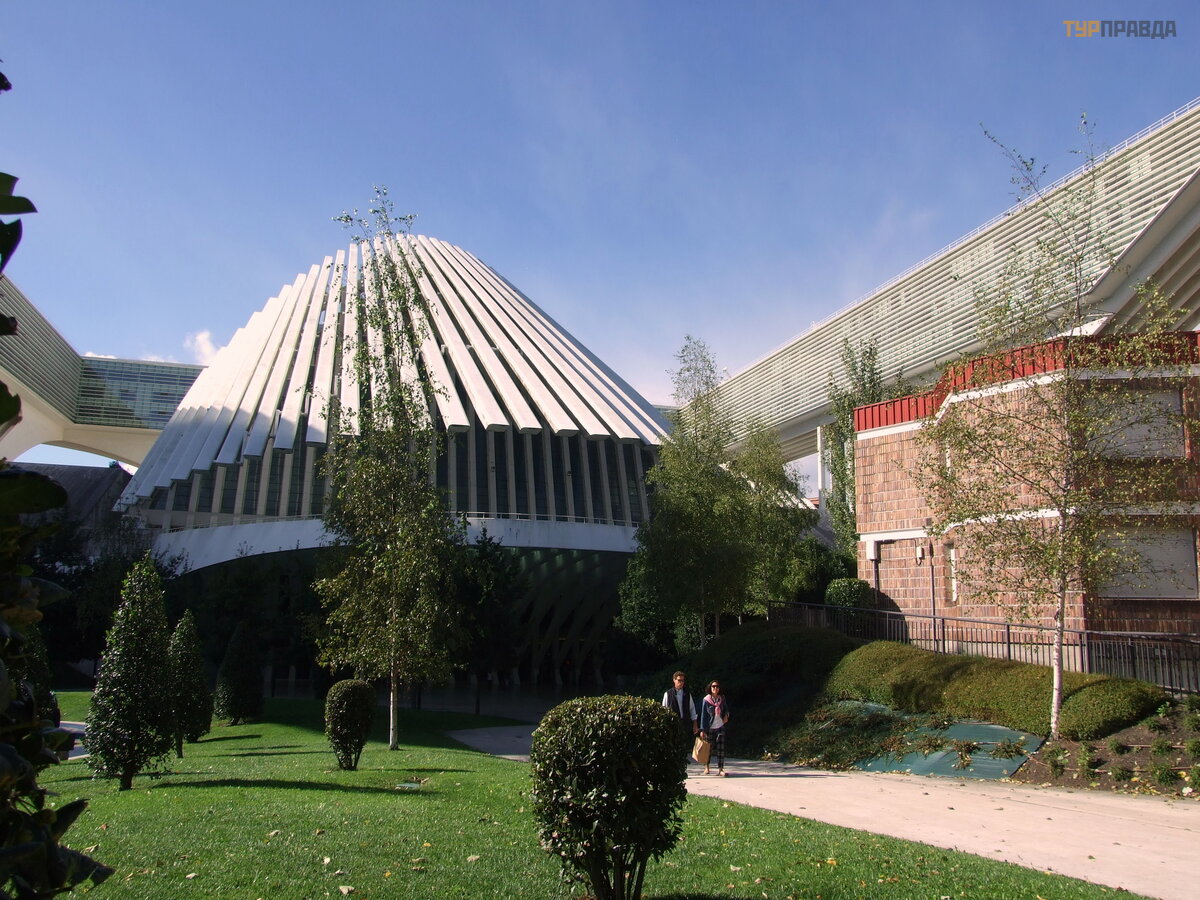


Дальше посетили главный собор Астурии - готический собор Спасителя (Сан-Сальвадор) 14-16 веков, Надо сказать, что этот собор практически неизвестен у нас, а ведь там хранится бесценная реликвия - СудАрь, т. е. погребальный платок с головы Христа. Хранится в ларце и открывается только три раза в год. Кроме того там храняться еще священные испанские реликвии: два креста, крест Победы - символ Астурии, с котогрым испацы победили арабов при Ковадонге и Крест Ангелов - символ Овьедо
 Крест Победы
Крест Победы
 Ларец с Сударем
Ларец с Сударем
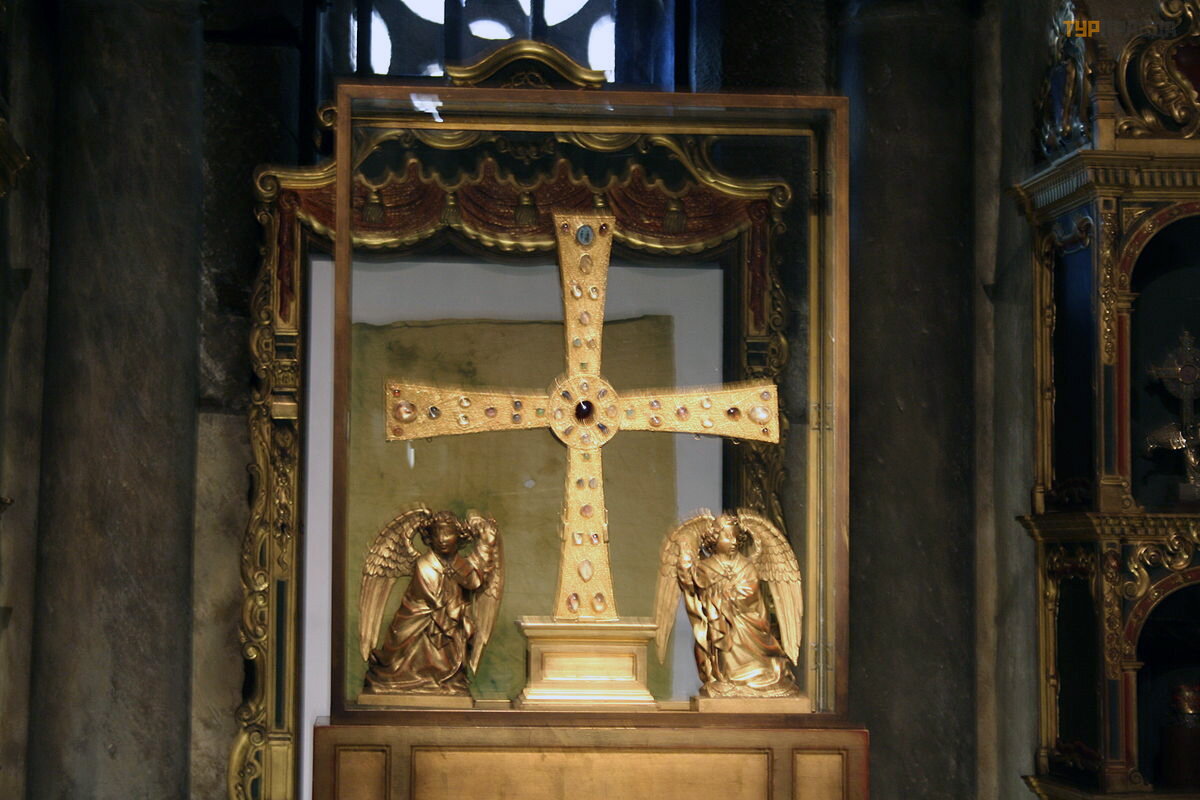 Крест Ангелов
Крест Ангелов
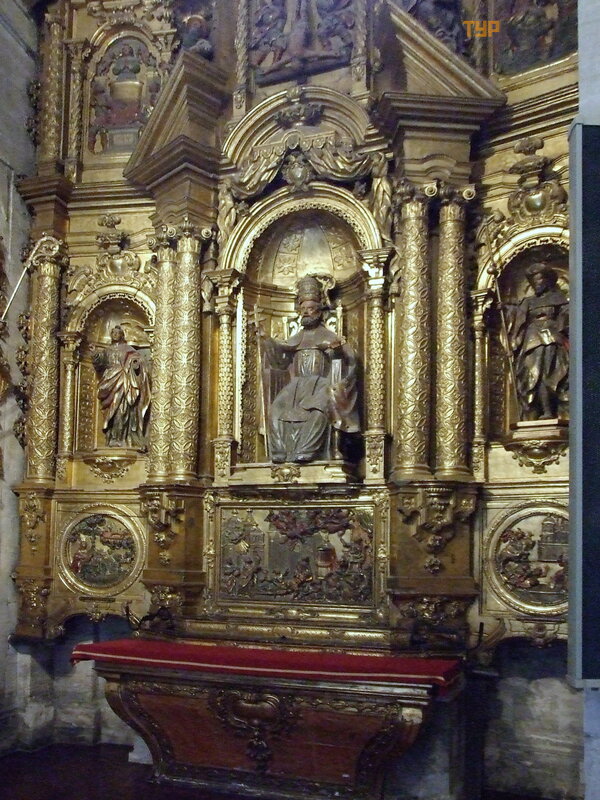 Собор изнутри
Собор изнутри
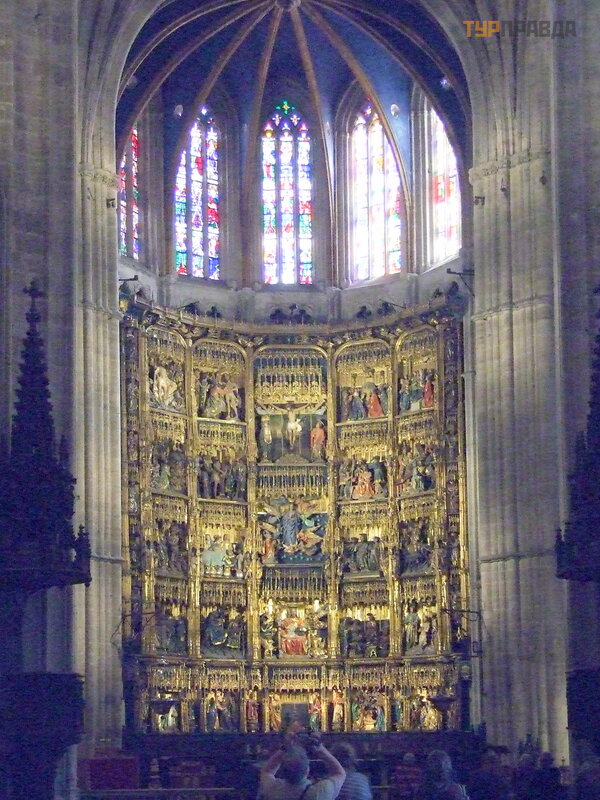 Собор изнутри
Собор изнутри
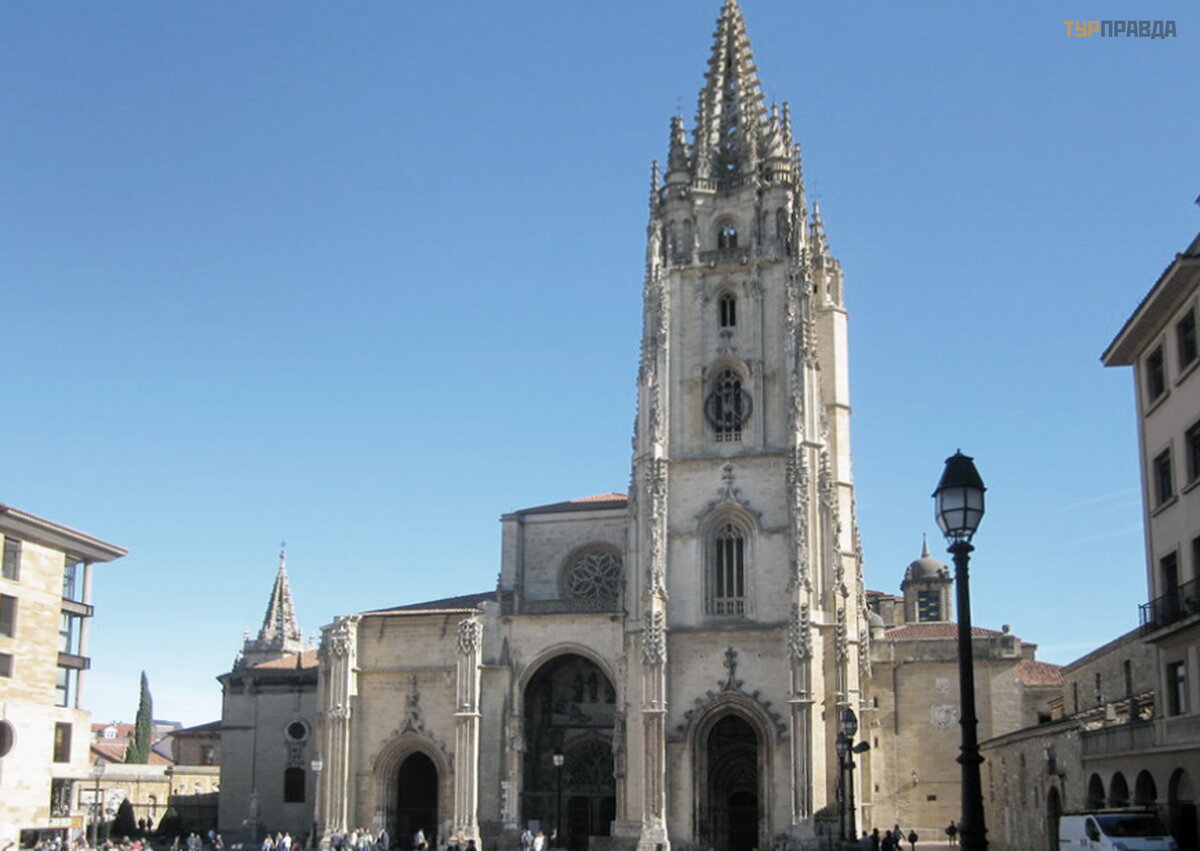 Собор. Внешний вид
Собор. Внешний вид
Город оставил самые радостные впечатления. Чистый, светлый, много хороших магазинов.
Рядом со старинными зданиями много модернистких монументов, где любят фотографироваться туристы:
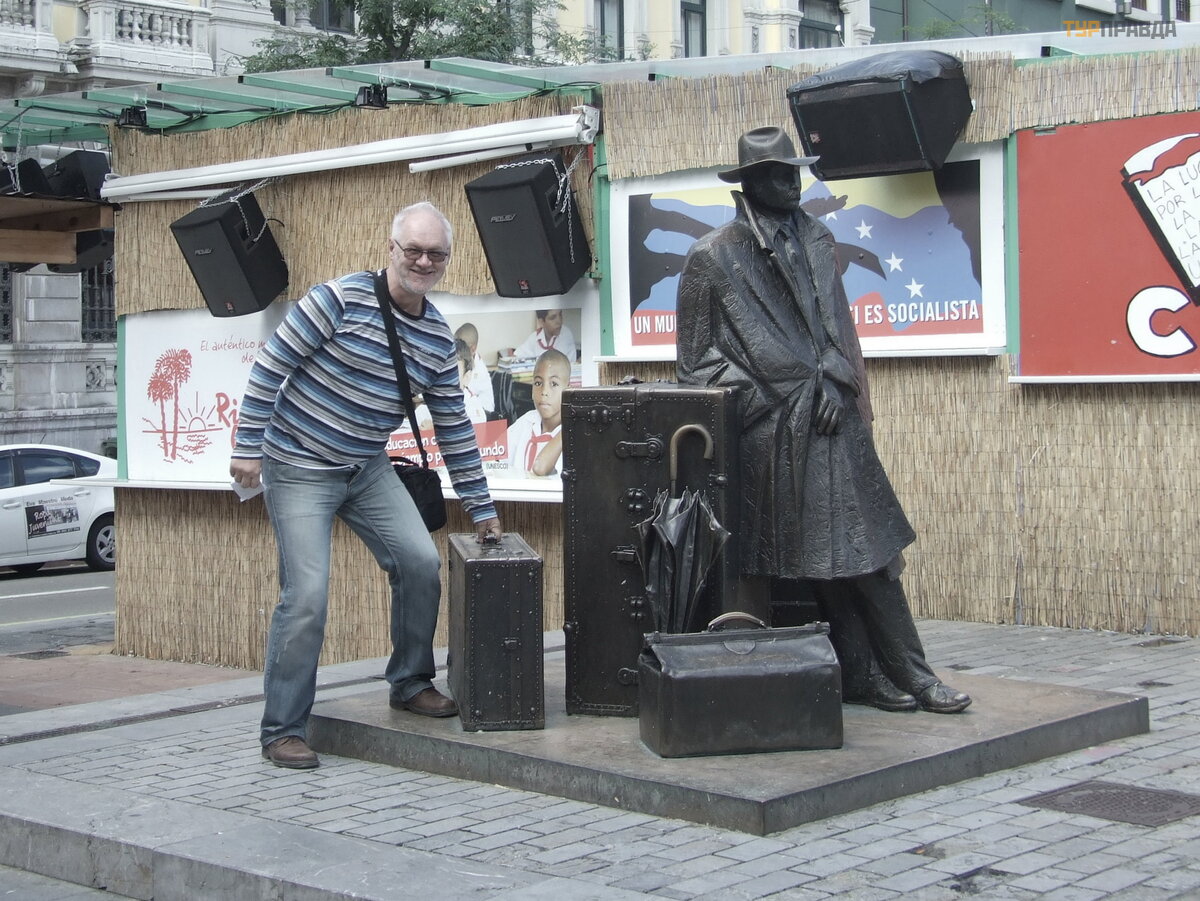 Грех у такого раззявы не стырить чемодан!
Грех у такого раззявы не стырить чемодан!
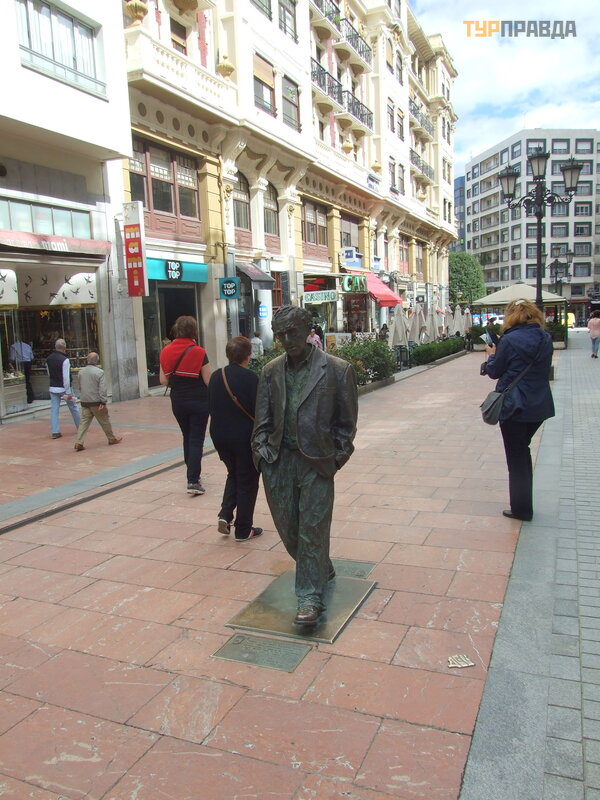 А вот и Вуди Аллен гуляет по городу, который он очень любит и снимает в своих фильмах
А вот и Вуди Аллен гуляет по городу, который он очень любит и снимает в своих фильмах
 А вот это группа голозадых куда отправилась?
А вот это группа голозадых куда отправилась?
 Улицы Овьедо
Улицы Овьедо
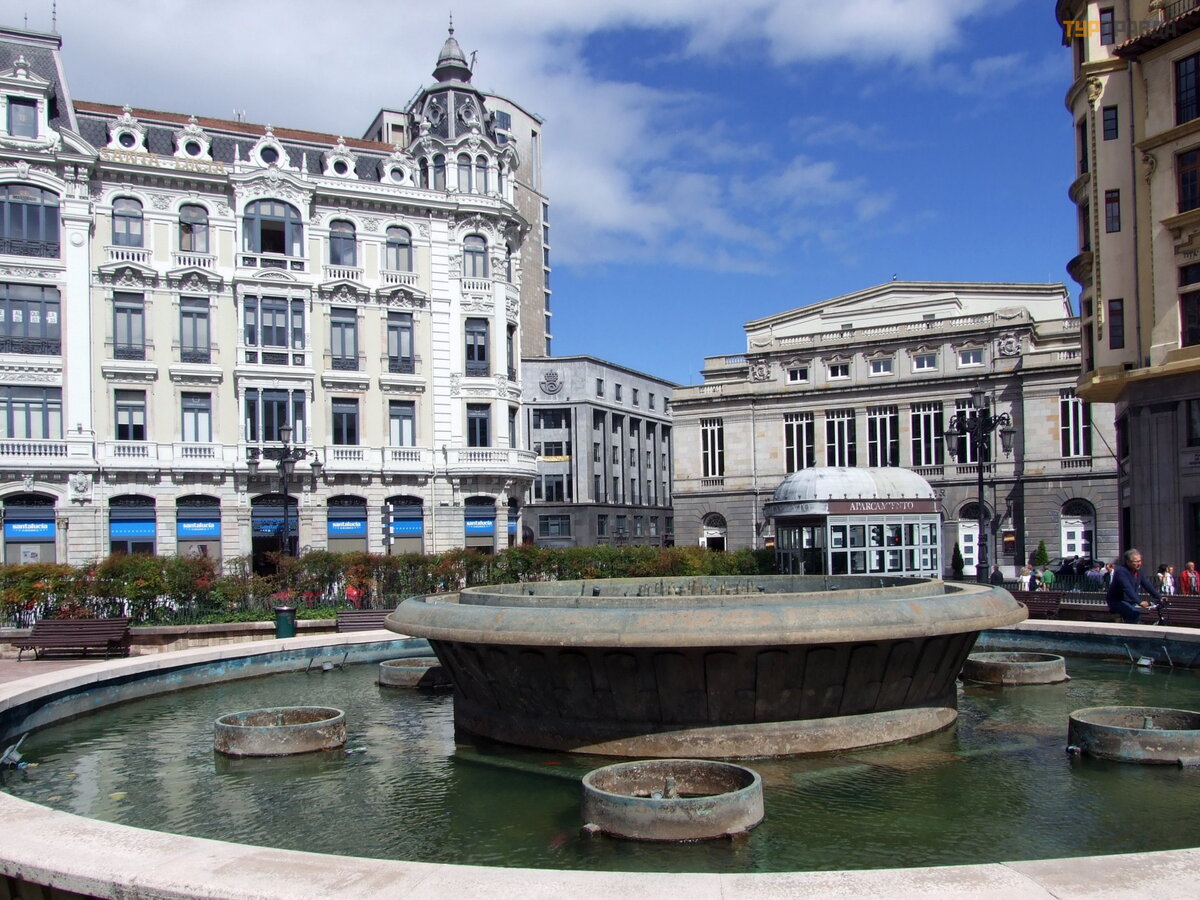
А вот неороманская церковь Сан-Хуан Эль Риал, начала 20 века:

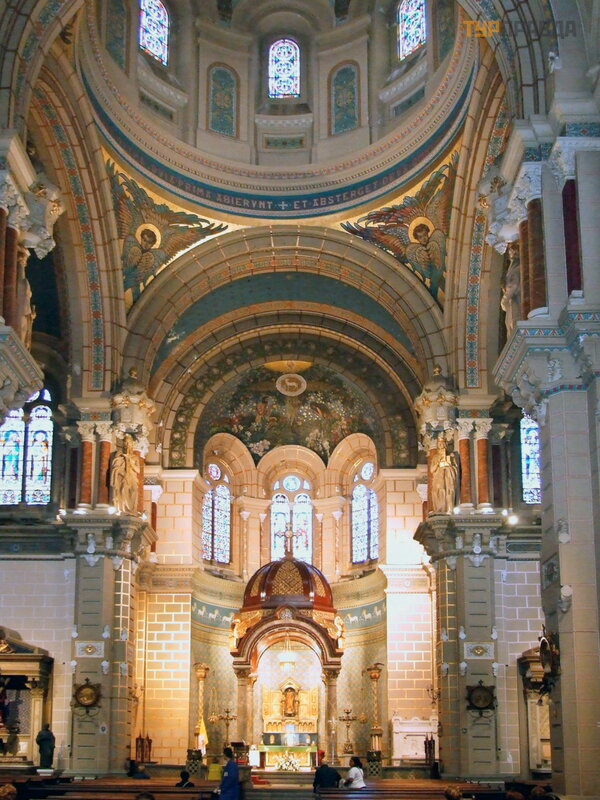
К сожалению нашще знакомство с Овьедо на этом закончилось, т. к. нас увезли на обед. Обед оказался очень насыщенным и в догонку нас угощали сидром из специального устройства: бутылка закреплялась на стойке высотой около 2 м. и оттуда сидр наливался в бокал. Местные считают, что только так и надо пить сидр, т. к. он при этом насыщается пузырьками воздуха и дает лучший вкус. По мне, так вино лучше.
После обеда нас повезли в священное место для всех испанцев - Кавадонгу. Это вроде Бородинского поля или поле Куликово для Руси. Долгое время Испания была покорена арабами (замечу, что арабы не препятствовали испанцам соблюдать религиозные обряды, в отличае от испанской инквизиции, жестоко карающих неверных вплоть до 19 века). При Кавадонге испанцы одержали историческую победу, которая положила началу Реконкисте (освобождению Испании от арабов). Командовал войсками Астурийский король Пелайо, который и похоронен в пещере в горах.
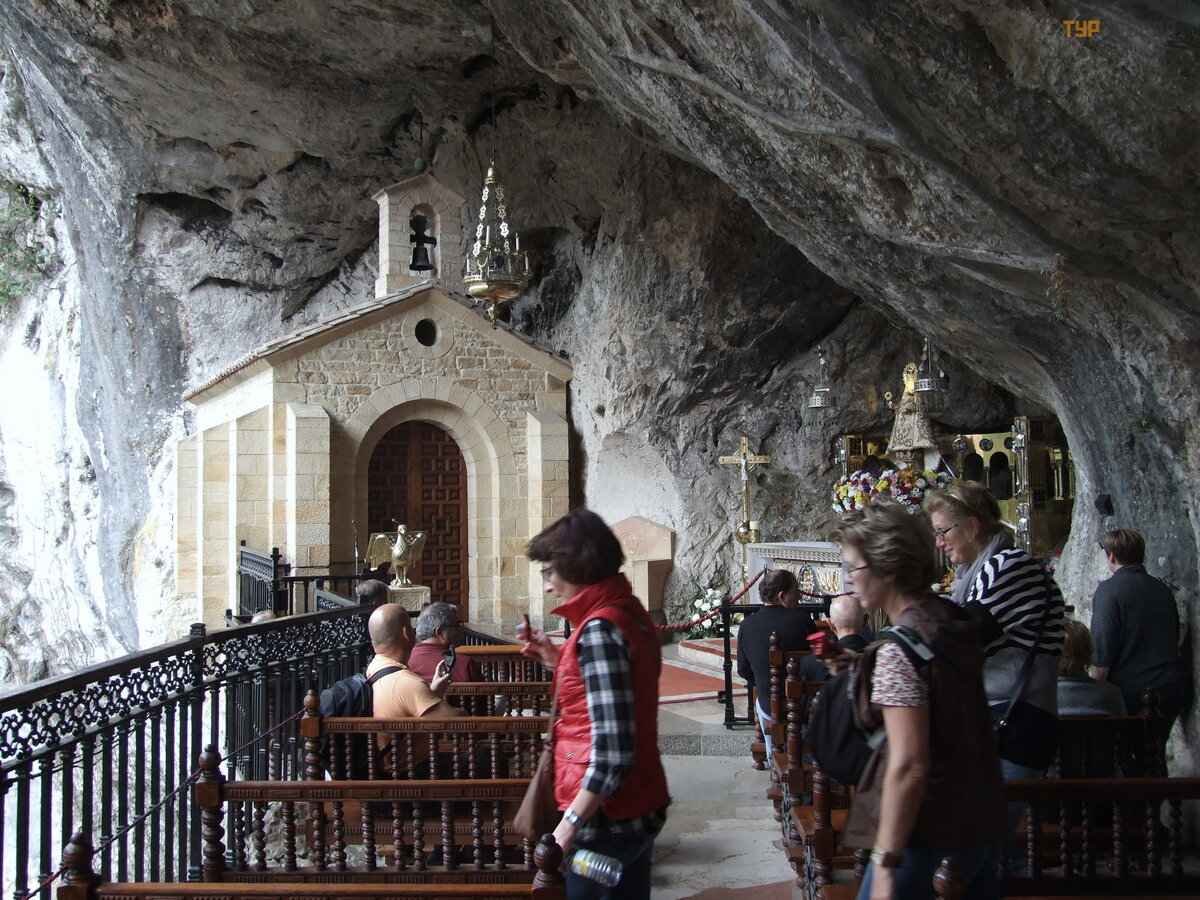 Часовня с могилой Пелайо
Часовня с могилой Пелайо
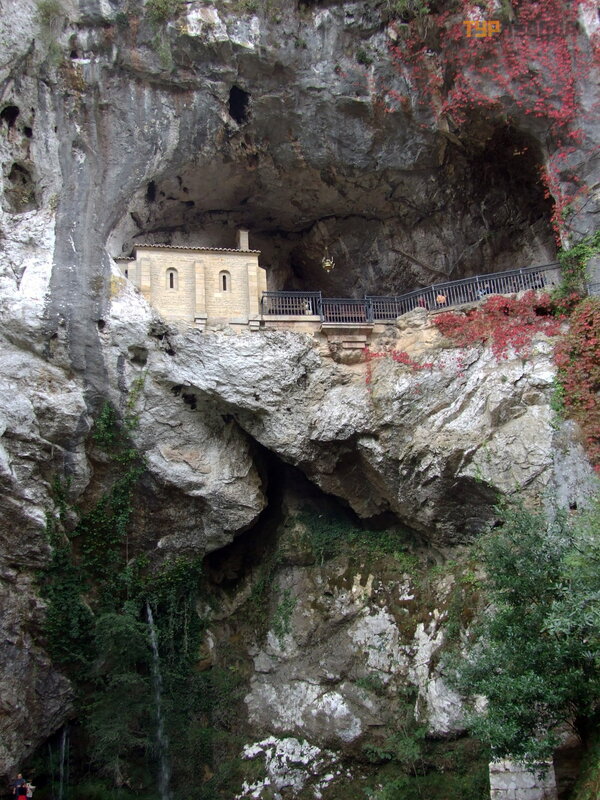 Вид на пещеру с подножья
Вид на пещеру с подножья
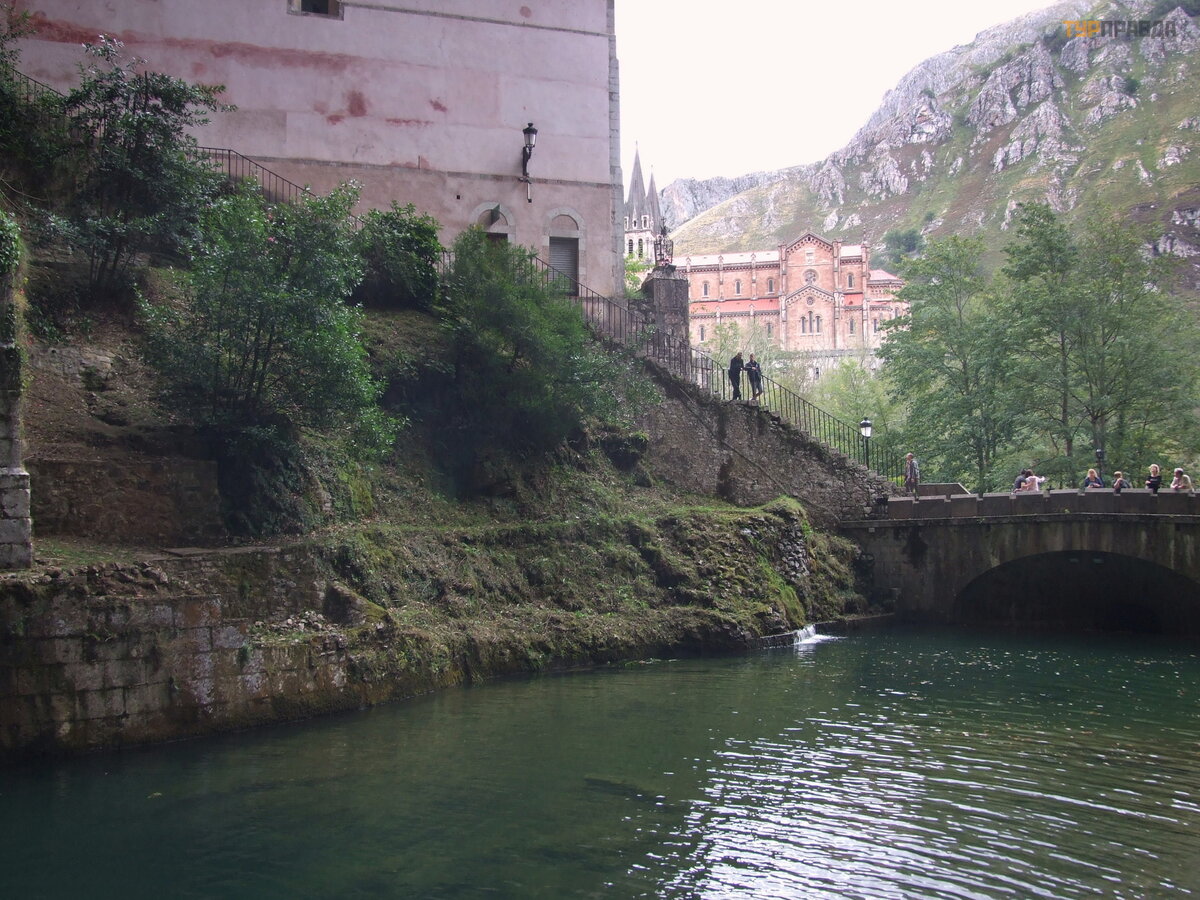 У подножья горы
У подножья горы
Рядом расположена статуя Пелайо и базилика Св. марии 19 века.

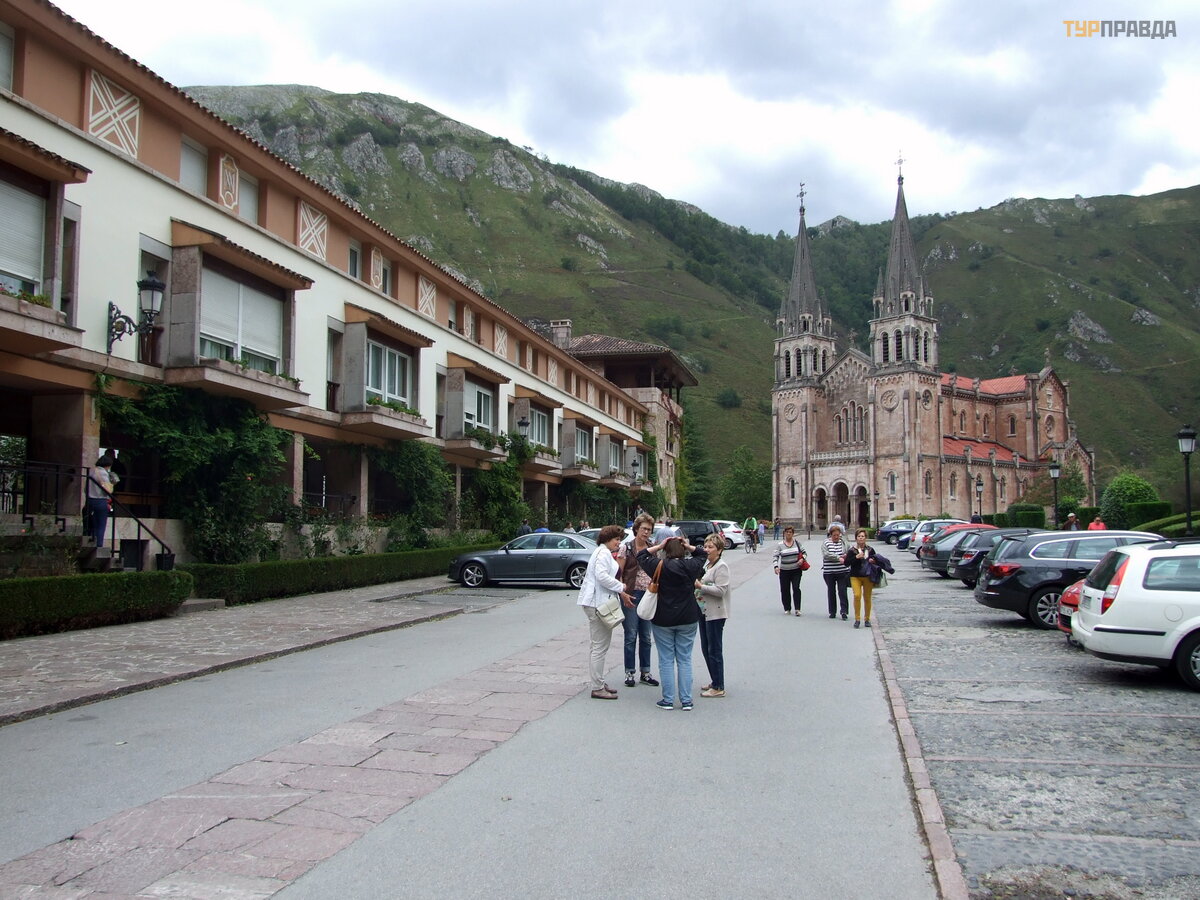
День закончился посещением неподалеку городка Кангас-де-Онис, основаный после битвы при Кавадонге королем Пилайо. Можно сказать, что он был первой столицей Испании (50 лет до 774 года). Городок очень живописный с замечательным мостом 14 века, который украшает Крест Победы
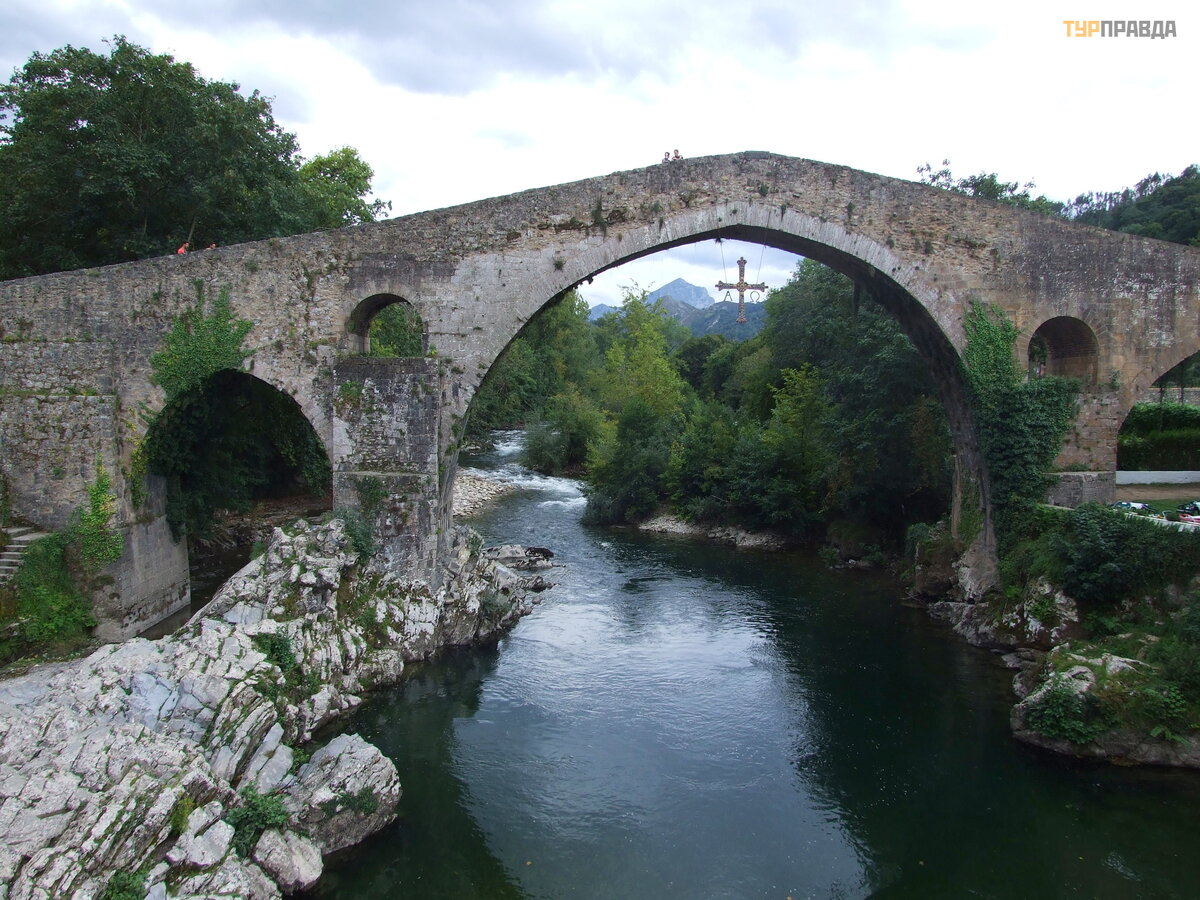
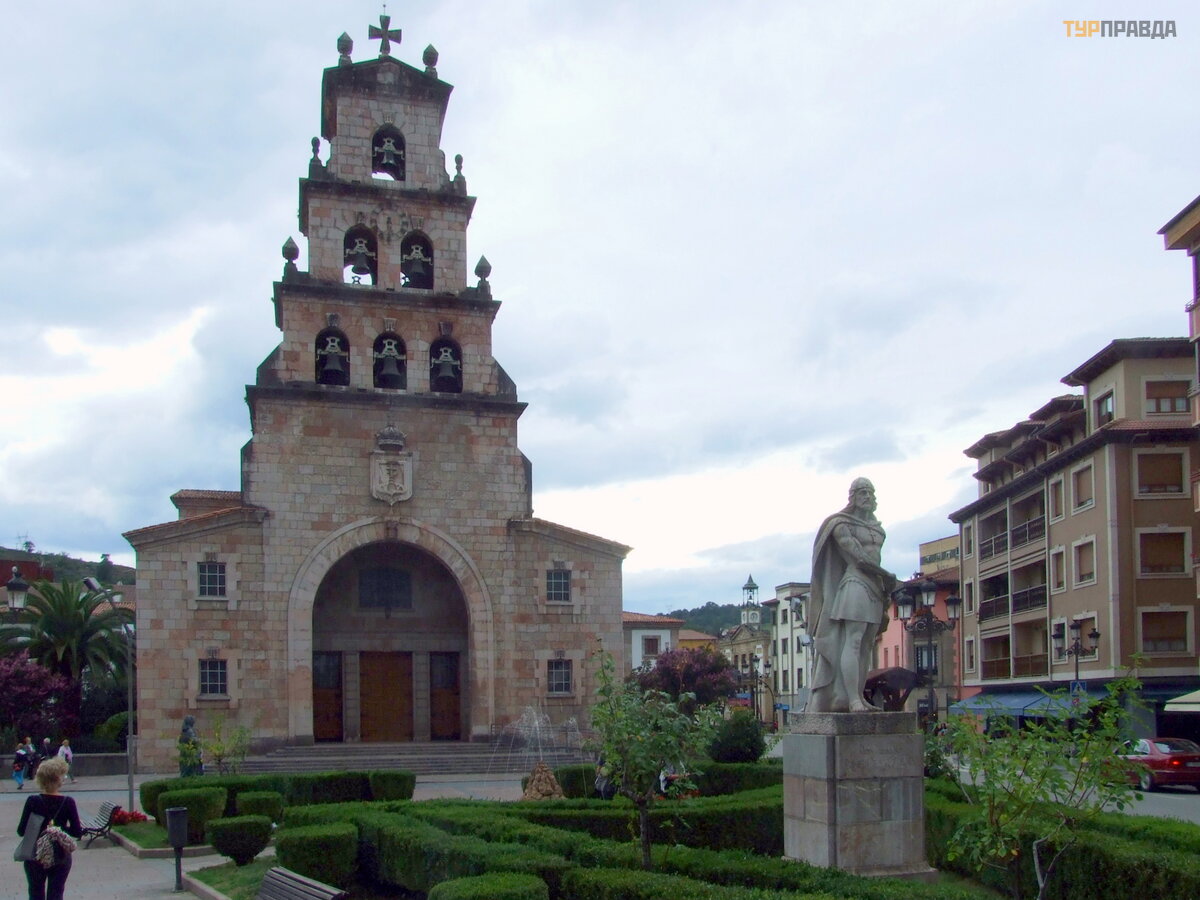 Церковь 60-е года 20 века
Церковь 60-е года 20 века

 А это пример дома в колониальном стиле. Многие испанцы воротясь домой из " Нового Света" строили такие дома
А это пример дома в колониальном стиле. Многие испанцы воротясь домой из " Нового Света" строили такие дома
Day 4
In the morning we went to Santander, the center of Cantabria autonomy.
This is a large port city, stretching along the coast of the Atlantic Ocean with numerous parks and beaches, passenger ferries depart from here to the UK.
Of the sights we visited the Royal Palace of La Magdalena (they are not allowed inside) and the park around.
 Royal Palace
Royal Palace
 The beaches of Santander
The beaches of Santander
In the old town, I will highlight the Cathedral of the Assumption of the Virgin (12-14 centuries)

 Cathedral inside
Cathedral inside
 On the streets of Santander
On the streets of Santander
 On the streets of Santander
On the streets of Santander
Then we were brought to the town of Santillana del Mar,
the Spaniards joke that this is the city of "three lies" (by name): there are no saints, the sea and it is not on the plain). However, this is an obligatory place for visiting pilgrims, here on the pavements and walls there is often a sign of Jacob - a shell. the town itself is small, practically retaining its ancient appearance. There I bought a souvenir as a keepsake - a Spanish black bull (during the reign of Franco, metal silhouettes of bulls were placed on the hills throughout Spain, but the Catalans hate everything Spanish and it is considered a special chic for them to somehow get close to a bull and saw off his personal belongings).

Then we were taken to the cave of Altamira. There they found rock carvings of people and animals, which are 14 centuries old. The caves themselves are closed, the Spaniards built an exact copy of the cave and lead tours there. I consider it a form of swindle - to take money for copies. So I didn't take any photos.
The whole group was disappointed.
Our itinerary of the day ended in Comillas, a small coastal town. However, there are many remarkable buildings, the main of which is "El Caprichio" by the great Gaudi.
Entrance is paid, but it's worth it, not many buildings Gaudí built.


 Original balcony
Original balcony
 Sunflowers are the main decor theme
Sunflowers are the main decor theme

 Fence
Fence
 In the garden
In the garden
 View from the garden
View from the garden
 And here is the great Gaudi sitting on a bench and looking at his masterpiece
And here is the great Gaudi sitting on a bench and looking at his masterpiece
There is a large Pontifical University in the town.
We did not reach it, due to lack of time

The next day of the trip ended on a good note.
Day 5
We spent two nights in Gijon (according to the local Gijon), a rather large Asturian city and port. But it was impossible to inspect it, because they left early, and returned already dark.
Here are some morning photos that I managed to take before the bus left



On this day the weather was sunny and the first city of the trip was the ancient city of Oviedo, the capital of Asturias.
First, the local guide took us to the mountain, where the UNESCO monument church - St. Maria Naranco (before that the building was the palace of the king of Asturias) of the 9th century.

The entrance to the inside is paid - 2 euros,
but there is absolutely nothing to see, everything is empty

The mountain offers a wonderful view of Oviedo. The white wing stands out for another masterpiece of Calatrava - the Palace of Congresses, although he made mistakes in the design and the construction company rebuilt some elements and filed a lawsuit against the architect for exceeding the estimate. The court awarded the architect to pay the construction company as much as 3 million euros.

Here is the Palace itself



Then we visited the main cathedral of Asturias - the Gothic Cathedral of the Savior (San Salvador) of the 14-16th centuries. Christ.
It is kept in a casket and is only opened three times a year. In addition, sacred Spanish relics are also stored there: two crosses, the Cross of Victory - the symbol of Asturias, with which the Spaniards defeated the Arabs at Covadonga and the Cross of Angels - the symbol of Oviedo
 Victory Cross
Victory Cross
 Cask with Sudar
Cask with Sudar
 Cross of Angels
Cross of Angels
 The Cathedral from the inside
The Cathedral from the inside
 The Cathedral from the inside
The Cathedral from the inside
 Cathedral. Appearance
Cathedral. Appearance
The city left the most joyful impressions. Clean, bright, lots of good shops.
Next to the old buildings there are many modernist monuments where tourists like to take pictures:
 It's a sin not to steal a suitcase from such an open guy!
It's a sin not to steal a suitcase from such an open guy!
 And here is Woody Allen walking around the city, which he loves very much and shoots in his films
And here is Woody Allen walking around the city, which he loves very much and shoots in his films
 Where did this group of naked people go?
Where did this group of naked people go?
 Streets of Oviedo
Streets of Oviedo

And here is the neo-Romanesque church of San Juan El Rial, early 20th century:


Unfortunately, our acquaintance with Oviedo ended there, because we were taken away for lunch. The dinner turned out to be very rich and, in pursuit, we were treated to cider from a special device: the bottle was fixed on a rack about 2 m high, and from there the cider was poured into a glass. Locals believe that this is the only way to drink cider, because it is saturated with air bubbles and gives the best taste. For me, wine is better.
After lunch we were taken to a sacred place for all Spaniards - Cavadonga. This is like the Borodino field or the Kulikovo field for Russia. For a long time, Spain was conquered by the Arabs (I note that the Arabs did not prevent the Spaniards from observing religious rites, unlike the Spanish Inquisition, which severely punished the infidels until the 19th century). At Cavadonga, the Spaniards won a historic victory, which marked the beginning of the Reconquista (liberation of Spain from the Arabs). The troops were commanded by the Asturian king Pelayo, who is buried in a cave in the mountains.
 Chapel with Pelayo's grave
Chapel with Pelayo's grave
 View of the cave from the foot
View of the cave from the foot
 At the foot of the mountain
At the foot of the mountain
There is a Pelayo statue and the 19th century St. Mary's Basilica nearby.


The day ended with a visit to the nearby town of Cangas de Onis, founded after the Battle of Cavadonga by King Pilayo. We can say that it was the first capital of Spain (50 years until 774). The town is very picturesque with a wonderful bridge of the 14th century, which adorns the Victory Cross

 Church of the 60s of the 20th century
Church of the 60s of the 20th century

 And this is an example of a colonial-style house. Many Spaniards returning home from the "New World" built such houses
And this is an example of a colonial-style house. Many Spaniards returning home from the "New World" built such houses

 Sunflowers are the main decor theme
Sunflowers are the main decor theme And here is the great Gaudi sitting on a bench and looking at his masterpiece
And here is the great Gaudi sitting on a bench and looking at his masterpiece It's a sin not to steal a suitcase from such an open guy!
It's a sin not to steal a suitcase from such an open guy!  And here is Woody Allen walking around the city, which he loves very much and shoots in his films
And here is Woody Allen walking around the city, which he loves very much and shoots in his films Where did this group of naked people go?
Where did this group of naked people go?  View of the cave from the foot
View of the cave from the foot Church of the 60s of the 20th century
Church of the 60s of the 20th century And this is an example of a colonial-style house. Many Spaniards returning home from the "New World" built such houses
And this is an example of a colonial-style house. Many Spaniards returning home from the "New World" built such houses





























































